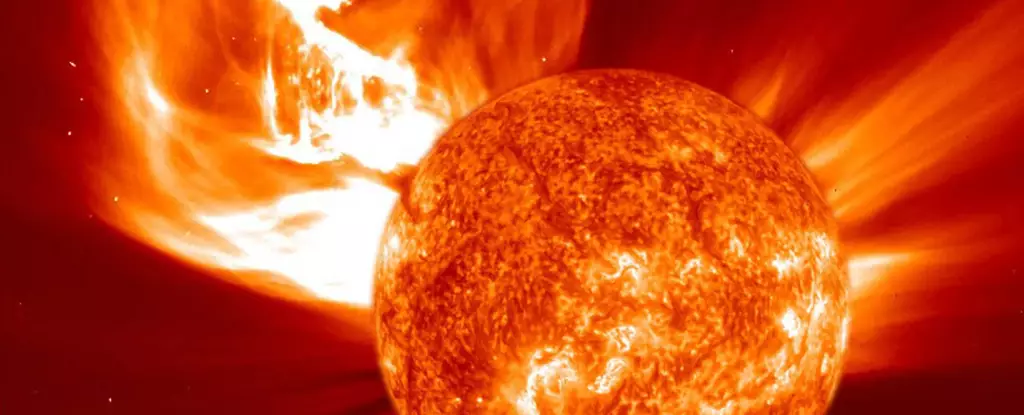The recent news regarding the Binar-2, 3, and 4 satellites from Curtin University’s Binar Space Program serves as a stark reminder of the treacherous realities of operating in low Earth orbit (LEO). Designed to contribute to scientific knowledge and advancements in satellite technology, these CubeSats experienced an unexpected termination of their missions, burning up far sooner than anticipated. Originally, they were expected to survive for six months; however, they succumbed to atmospheric re-entry after just two months. The premature end of these missions raises important questions concerning the impacts of solar phenomena on satellite lifespan and functionality, particularly as we navigate through a period of heightened solar activity.
Satellites in low Earth orbit orbit at altitudes of 2,000 kilometers or less, experiencing what is known as orbital decay—a natural process characterized by gradual descent towards Earth due to atmospheric drag. While satellites like the Binar CubeSats are designed with inherent limitations in altitude adjustment capabilities, they are especially vulnerable to sudden changes in the Earth’s atmosphere caused by solar activity. The unique characteristics of these satellites make them reliant on predictability within the environmental conditions of space, which is constantly in flux.
The term “Binar,” translating to “fireball” in the Noongar language, resonates deeply with the fate of the satellites, illuminating the reality that their demise—from an engineering perspective—was always part of the plan. However, the losses came sooner than expected due to unforeseen variations in solar behavior, which has proven challenging to predict accurately. As the Sun experiences periods of heightened activity, it alters the thermal and ionospheric dynamics of the Earth, leading to a variety of disruptive outcomes for satellites operating within the fray.
Solar Activity and Space Weather Implications
Solar activity encompasses a range of phenomena, including solar flares, sunspots, and solar wind—forces that significantly influence the operational landscape of satellites. It is worth noting that the solar cycles, which peak approximately every 11 years, dictate the variations in solar activity, making it a fundamental area of study for space weather forecasts. Currently, we find ourselves in solar cycle 25, where the levels of solar activity have exceeded initial predictions by more than 1.5 times. This spike is particularly consequential for satellites, as higher solar activity correlates to an increase in charged particles interacting with satellite systems.
The implications of space weather are profound. Auroras, often celebrated for their visual splendor, are simply one manifestation of solar activity on Earth. However, the less visible consequences—such as disruptions to satellite communications, heightened radiation exposure for astronauts and pilots, and particularly for CubeSats like those in the Binar Program—are far more critical to comprehend and mitigate against. The phenomenon where solar energy causes the outer atmosphere to expand results in increased atmospheric drag, significantly impacting satellites that lack sophisticated correction mechanisms to counteract this effect.
The Binar satellites showcased a fundamental truth about the economics of space exploration: even though missions utilizing CubeSats generally operate under cost-effective models, the abrupt termination of a mission due to unexpected influences presents a financial loss that extends beyond mere launch expenses. It symbolizes a wasted opportunity for research and technological advancement, not to mention the emotional toll on the teams involved.
The challenges faced by CubeSats demonstrate an urgent need for improved space weather forecasting tools that can accurately predict solar phenomena. As more universities and commercial entities venture into satellite deployment, the reliance on precise and actionable data will remain paramount. It is vital to prepare for the unknown, especially with the prospect of increasing solar activity as we advance toward solar maxima and subsequent minima in the upcoming years.
Despite the misfortunes with Binar-2, 3, and 4, the Binar Space Program remains undeterred, forging ahead with preparations for future missions. The experience gleaned from the premature demise of the satellites will undoubtedly inform strategic development for subsequent launches. With a fervent commitment to secure a foothold in space, the program aims to navigate the unpredictable nature of solar activity more effectively.
The Binar Space Program’s journey highlights the complex interplay between human innovation and the relentless forces of nature. While unfortunate, the lessons learned here will be invaluable as we continue to explore the cosmos, ensuring that we are better equipped for the challenges that lie ahead. The cosmos is a treacherous playground, and understanding its intricate dynamics is essential for the progress of satellite technology and space exploration.


Leave a Reply